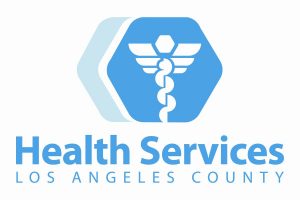 INDUSTRY: Healthcare
INDUSTRY: Healthcare
EMPLOYEES: 23,000+
The Los Angeles County Department of Health Services (DHS) is an integrated health system that operates four acute care hospitals, 26 health centers, and provides health care to adults and youth in the LA County jail and juvenile justice systems. Across its network of clinical sites and through partnerships with community-based clinics, DHS cares for about 750,000 unique patients each year, employs more than 23,000 staff, and has an annual operating budget of $6.2 billion. DHS is the second-largest municipal health system in the nation.
THE CHALLENGE
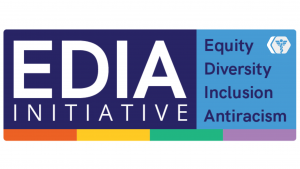 On July 21, 2020, the Los Angeles County Board of Supervisors voted to declare “racism as a public health crisis.” DHS heeded this call to action, recognizing the urgent need to make meaningful systemic change and address the public health implications of racism, which were magnified within the context of the COVID-19 pandemic.
On July 21, 2020, the Los Angeles County Board of Supervisors voted to declare “racism as a public health crisis.” DHS heeded this call to action, recognizing the urgent need to make meaningful systemic change and address the public health implications of racism, which were magnified within the context of the COVID-19 pandemic.
In December 2020, DHS enlisted Lumos Transforms to co-create an Equity, Diversity, Inclusion, and Antiracism (EDIA) Initiative with staff, community members, and patients. Lumos approached this project through an embodied, trauma-informed lens, intentionally embedding EDIA values throughout the comprehensive strategic planning process.
THE PROCESS
Learning From Experience and Data
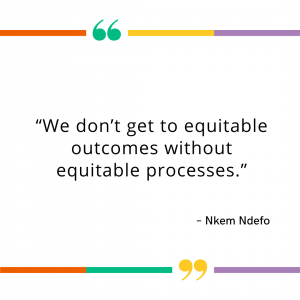 The first step in making change is understanding what has been tried, what has worked, and what can be improved. To develop the EDIA strategic planning framework, Lumos researched 50 large or safety net health and governmental systems nationwide to gather information and data on equity best practices. We conducted 46 interviews with key representatives throughout DHS, at other systems and healthcare networks across the country, and with EDIA subject matter experts to inform the development of strategic priorities.
The first step in making change is understanding what has been tried, what has worked, and what can be improved. To develop the EDIA strategic planning framework, Lumos researched 50 large or safety net health and governmental systems nationwide to gather information and data on equity best practices. We conducted 46 interviews with key representatives throughout DHS, at other systems and healthcare networks across the country, and with EDIA subject matter experts to inform the development of strategic priorities.
Inclusive and Equitable Planning Structure
With a goal of promoting broad, inclusive, and sustained stakeholder involvement, Lumos supported an advisory body and oversaw the creation of four types of strategic planning groups:
- Eight EDIA Subcommittees represented facility and department-level concerns, needs, and goals. EDIA Subcommittees ranged from 12-16 members drawn from staff, patients and community. An intentional recruitment process was developed to ensure a mix of identities, knowledge, skills, and expertise to advance EDIA efforts. All members were compensated for their expertise and hours of labor.
- EDIA Affinity Groups served as important safe places for staff with shared marginalized identities to connect and identify their common concerns, needs, and goals. There were six EDIA Affinity Groups with unlimited membership: Asian American Pacific Islander, Black, Disability, Latinx, LGBTQ+, and Women.
- An EDIA Council consisted of 28 representatives drawn from each of the EDIA Subcommittees and Affinity Groups.
- An EDIA Advisory Group was made up of eight people appointed by DHS Director Christina Ghaly, M.D. to provide supportive leadership to the EDIA Council and the DHS Executive Leadership Team. Members were selected for their commitment to EDIA and their diverse identities, occupational roles, and operational expertise.
Equitable Trauma-Informed Capacity Building
Strategic planning group members brought a wide range of lived, professional, and academic knowledge and experience to the EDIA Initiative planning process. To ensure a shared language and deep grounding in EDIA concepts, Lumos designed and conducted interactive capacity building training and coaching prior to the start of strategic planning. Through personal reflection, vulnerable discussion, and relational practice, members developed awareness and understanding of power, privilege, and the interrelationships and compounding effects of social determinants.
- 12 hours of interactive capacity building training for all strategic planning group members.
- 6 hours of interactive capacity building training for DHS Executive Leadership Team and EDIA Advisory Board members.
- 217 hours of one-on-one capacity building coaching with the DHS Director, Executive Leadership Team, and Advisory Group. Capacity building training concepts included:
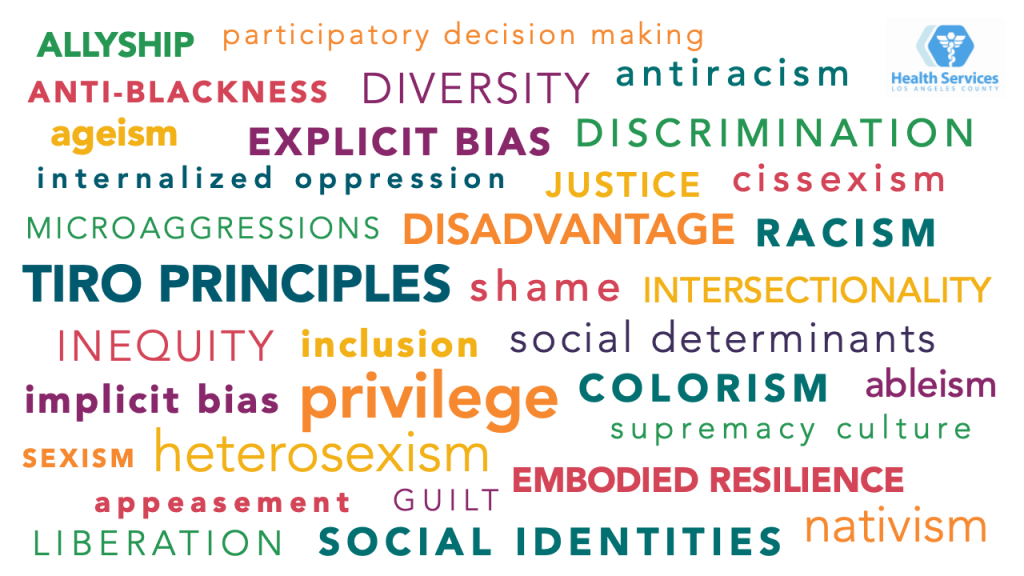
Centering stakeholders
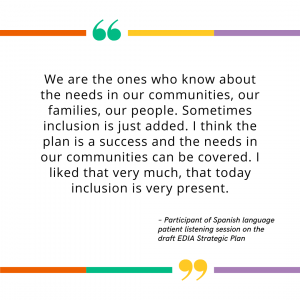
Throughout the planning process, Lumos developed, outreached for, and conducted:
- 34 initial listening sessions with patients, community members, and staff to ensure that their needs and hopes shaped strategic priority development.
- 42 follow-up listening sessions with patients, community members, and staff to ensure that the draft plan reflected initial stakeholder concerns.
- 781 people participated in listening sessions throughout the strategic planning process.
Sessions were held with groups that are frequently overlooked, including in-custody patients, environmental service staff, night-shift workers, and monolingual Spanish-speakers.
Overwhelmingly, listening session participants shared that they felt represented by the draft strategic plan and the inclusive process built trust with Health Services.
Transparent Communications
Trauma-informed principles of transparency, voice, choice, and self-agency also guided the ways in which Lumos shared information about the EDIA strategic planning process with staff, community, and patient stakeholders. We created a dedicated EDIA webpage to share timelines, project updates, heritage month celebrations, surveys, roundtable discussions, and profiles of strategic planning group members and other staff engaged in equity activities across DHS. Regular updates and resources were shared through DHS Town Halls, DHS-wide workforce emails and newsletters, and facility or department-specific channels. A public-facing website in English and Spanish allowed DHS patients and community members to learn about the Initiative, easily access the draft EDIA Strategic Plan, sign up for listening sessions, and fill out feedback surveys.
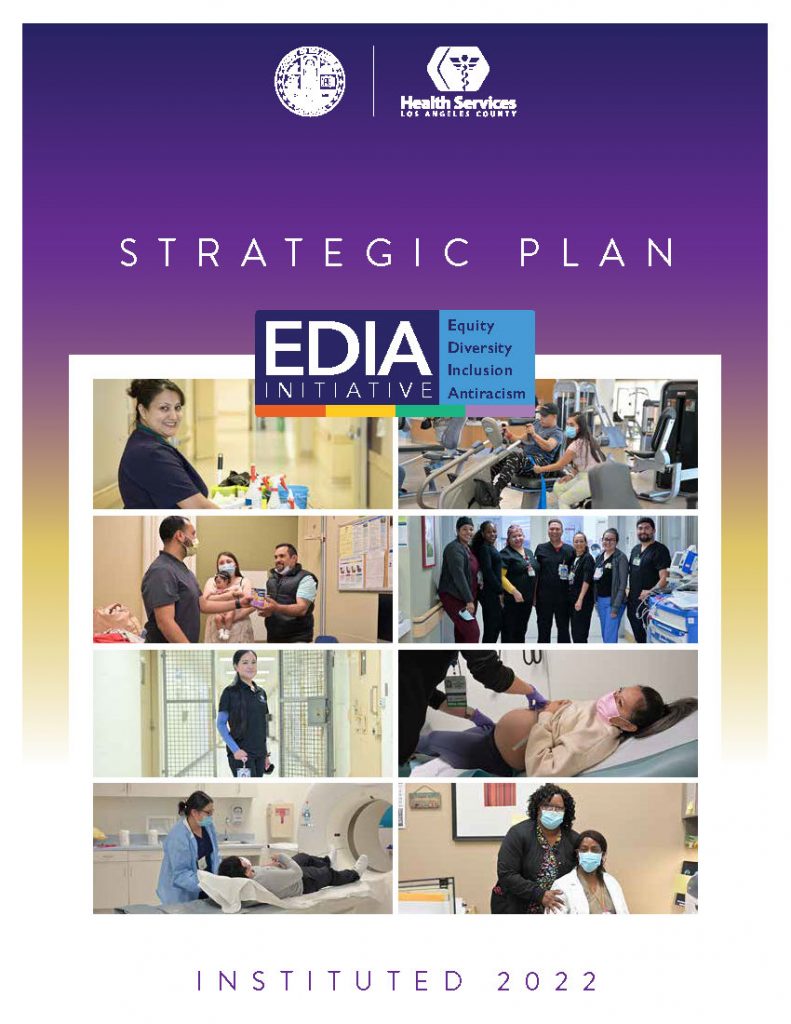 Holistic Strategic Planning Frameworks
Holistic Strategic Planning Frameworks
Guided by Lumos, EDIA strategic planning groups used several holistic strategic planning frameworks as they reviewed large volumes of research, data, and stakeholder input. Unlike typical strategic planning that starts with developing a mission and vision, herecommittee members began by determining 10 core values to guide the process and anchor the plan. These values were measuring sticks against which to evaluate the strength and integrity of the committees’ recommendations.
Accountability · Anti-oppression · Antiracism · Diversity · Equity · Inclusion · Justice · Love · Transparency · Visionary
After 18 months of hard work and dedication, DHS launched its final EDIA Strategic Plan in August 2022, centering 10 core EDIA Initiative values and focusing on strategic priority areas of Population Health, Patient Experience, Workforce, and Fiscal Sustainability.